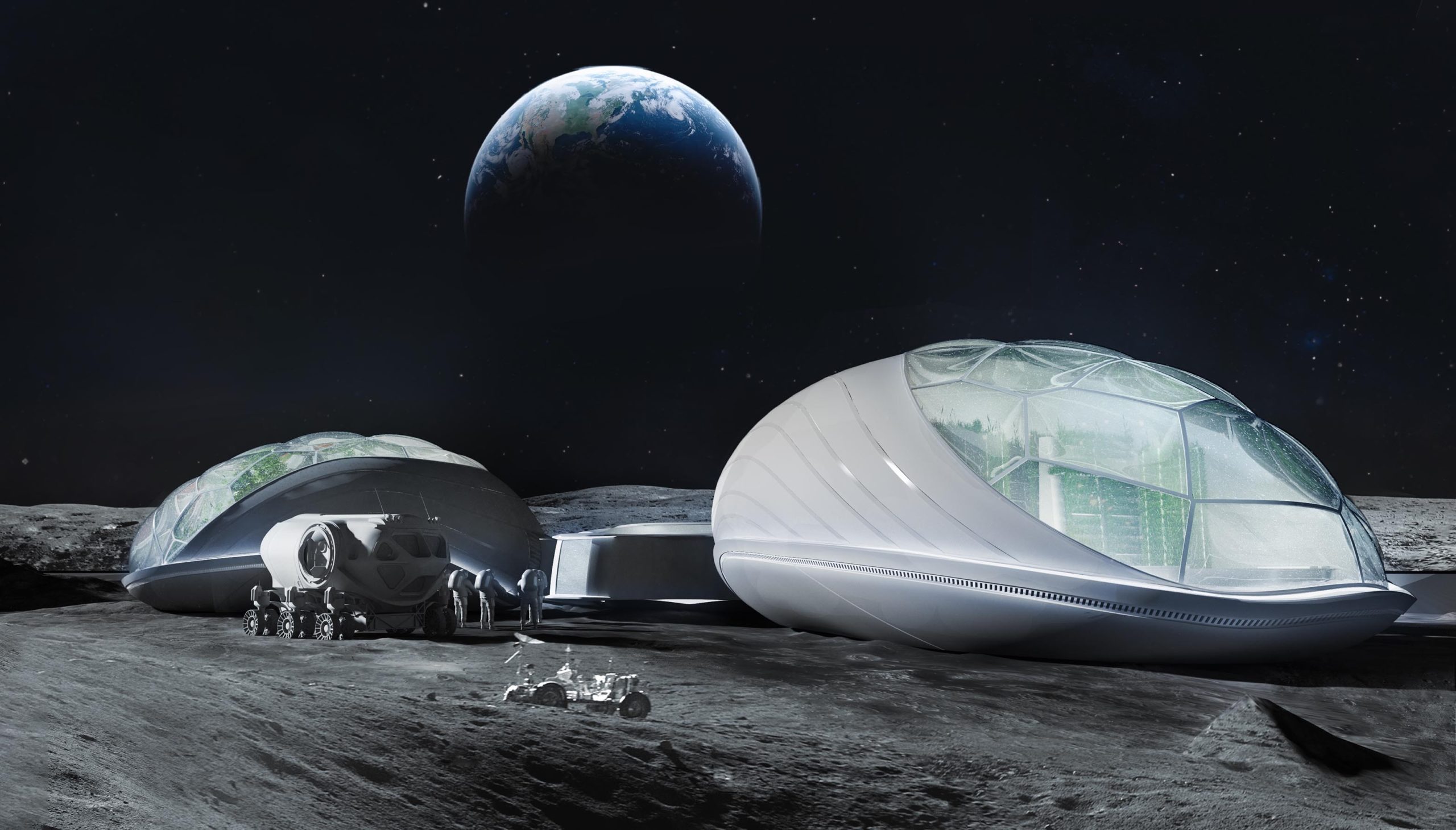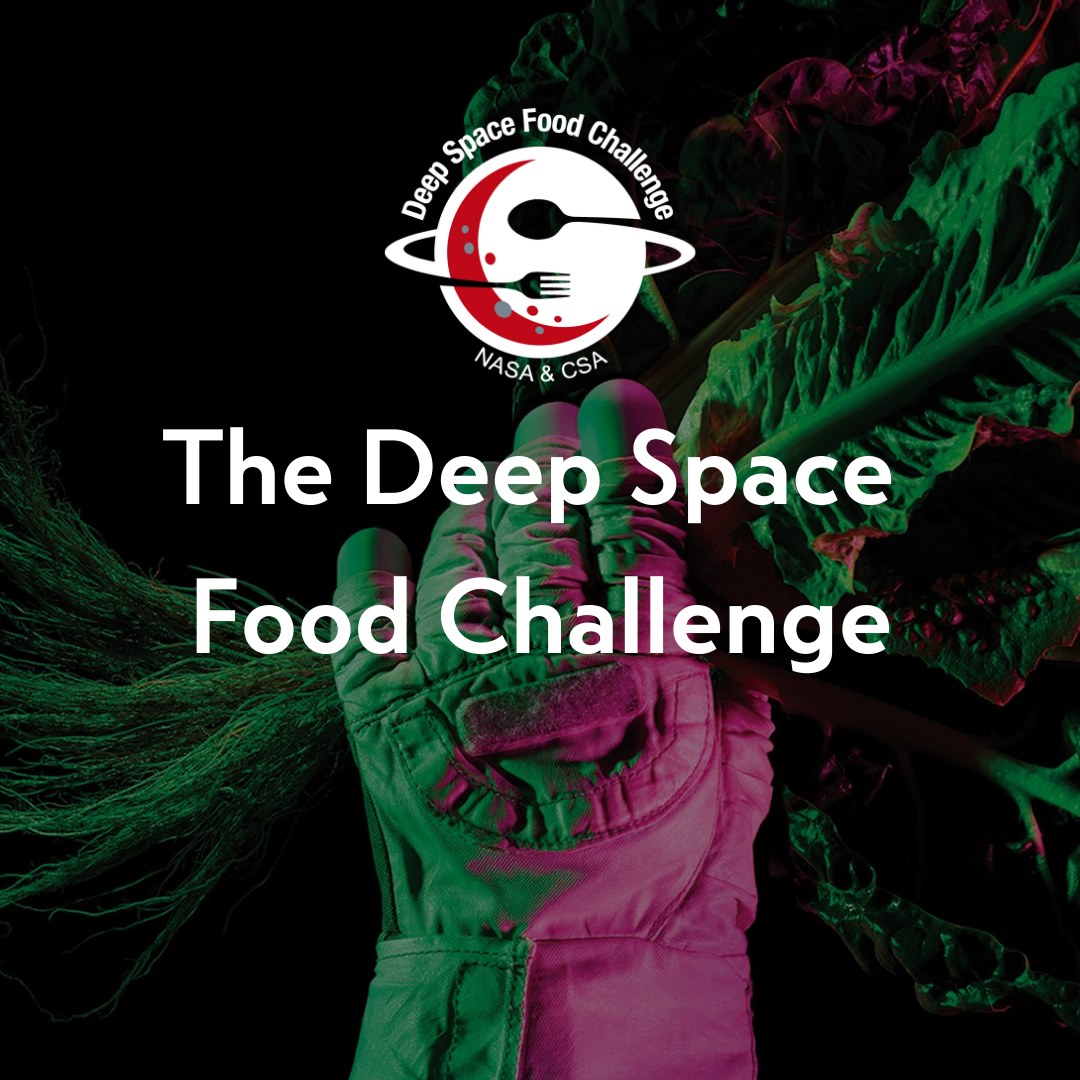NASA’s Deep Space Food Challenge: 3D Printed Steaks, Powders & Artificial Soil Among Phase I Winners
As NASA prepares to launch lunar missions sometime during the second half of the decade, building the roadblocks for a sustainable food system ready to support off-Earth exploration is crucial. Although early Moon missions will begin by using prepackaged food systems like those employed by the International Space Station (ISS) today, extending mission duration will require reducing resupply dependency on Earth. That is why NASA is focusing efforts on finding technologies to furnish crew members with a viable food system.
One of those initiatives is the Deep Space Food Challenge, an innovative competition to create novel and game-changing technologies to feed astronauts during long-duration space missions. On October 20, 2021, NASA announced that it had selected 18 Phase I winning teams to receive individual $25,000 awards and recognized ten international submissions at this year’s competition, hosted in partnership with the Canadian Space Agency (CSA). Some of the most ground-breaking ideas include 3D printed artificial soil, meat, and biopods for growing vegetables.
NASA’s associate administrator for space technology, Jim Reuter, said the agency “is excited to engage the public in developing technologies that could fuel our deep space explorers. Our approach to deep space human exploration is strengthened by new technological advances and diverse community input. This challenge helps us push the boundaries of exploration capabilities in ways we may not recognize on our own.”
In coordination with the CSA, NASA launched the competition in January 2021. For the first phase, they asked innovators to design food production technologies or systems requiring minimal resources, producing insignificant waste, and maximizing safe, nutritious, and palatable food outputs for long-duration space missions that could benefit people on Earth. Specifically, the challenge asked that the system fill food gaps for a three-year round-trip mission for a crew of four with no resupply.
Several winning designs used ingredients to create ready-to-eat foods such as bread and dehydrated powders that could be processed into more complex food products. We found at least eight projects that leveraged 3D printing technologies in a broad range of food-related categories. Here they are:
Mission: Space Food (California)
Mission: Space Food is a consortium of space, food, and technology experts creating an integrative approach to human nutrition in space. Powered by food tech startup Aleph Farm’s technology platform and culinary innovation company Astreas’ engineering expertise, the team developed a closed-loop system to cultivate and cook delicious and nutritious steaks for astronauts on their space missions. This method would allow a crew to produce meat with almost 1,000 times fewer inputs than pasture-based cattle farming by making meat from pluripotent stem cells using cell cryo-preservation and bioreactors. Additionally, the system can be adapted to grow other meats such as pork or lamb.
Aleph Farms recently made headlines after announcing that Leonardo DiCaprio was one of its backers. As one of the first companies to dive into the niche industry of alternative meats back in 2017, the Israeli business is a pioneer at growing steaks directly from the cells of cows. In 2018 it revealed the world’s first cell-cultured thin-cut steak and a year later successfully produced meat aboard the ISS using a bioprinter by Russian startup 3D Bioprinting Solution.

Combining nutrition designed for astronauts and flavors created by Michelin star chefs, Astreas has created a luxurious truffle. Image courtesy of Astreas.
BeeHex (Ohio)
NASA spin-off company BeeHex, a designer and manufacturer of 3D food printer equipment, has designed a Universal Food Fabricator (UFF). The multifunctional system can dehydrate plants and cultured meats into powder form foods, store them in hermetically sealed cartridges to elongate shelf life (five+ years), and fabricate food using stored food in cartridges when needed. The unique project emphasizes maximizing safe, nutritious foods requiring minimal inputs, providing astronauts with an adaptive tool for their essential needs.
Since it emerged in 2017, BeeHex has been leveraging 3D printing, robotics, artificial intelligence (AI), and machine learning to automate personalized nutrition. The startup has even developed a system to produce customized nutrition bars funded by the US Army and is changing how food is made by re-thinking food preparation and dispensing with its patent-pending 3D food printing and robotics systems.
Interstellar Labs (California)
Focused on creating advanced environmentally-controlled greenhouses, called BioPods, designed to grow fruits, vegetables, flowers, and plants anywhere, space startup Interstellar Lab has been selected by NASA as one of the challenge winners thanks to its novel modular bioregenerative system. Dubbed Nucleus, the space technology is expected to produce fresh microgreens, vegetables, mushrooms, and insects to provide micronutrients for long-term space missions. It combines several autonomous phytotrons (enclosed research greenhouses) to create a self-sustaining food production system that minimizes water, air, and nutrient inputs.
Interstellar Lab is known to use 3D printing technologies to manufacture the membranes and material systems of its BioPods. The company also aims to 3D print its Mars simulators, called Experimental Bioregenerative Station (EBios), designed as the first closed-loop, environment-controlled villages on Earth. With a dream team of 15 former SpaceX, Disney, Airbus, and Thales employees, Interstellar Lab has its sights set on scaling the production of BioPods through AM to meet the growing demand for food on Earth and in orbit.

Interstellar Lab’s environmentally-controlled modules for sustainable farming on Earth and life-support in space. Image courtesy of Interstellar Lab.
Space Lab Cafe (Colorado)
Space Lab Café, a novel crop production system from Space Lab Technologies, is a compact vertical farm that continuously produces a variety of nutritious produce with minimal water, power, waste, or processing time. Best of all, it operates with or without gravity in a Lunar, Martian, or spacecraft habitat while providing farm-to-table solutions for Earth’s urban centers or remote, harsh environments.
Since Space Lab has advanced 3D printing capabilities for rapid prototyping, which support numerous low and high-temperature filaments, resins for silicon oxide (SiO2) ceramics, aerospace-grade materials, and FDA-approved biocompatible materials, the company will surely leverage the technology for the Deep Space Food Challenge as well.
This novel crop production system evolved from several space agriculture technologies currently in development at Space Lab through many NASA Small Business Technology Transfer (STTR) program contracts and grant awards. Some of the most prominent ones include μG-LilyPond, an autonomous, thin-film hydroponic vertical farm used in microgravity that supports aquatic and rooted land plants, and the MarsOasis, an innovative Martian greenhouse that incorporates an inflatable, rigidizable dome, smart hybrid lighting, and a novel means of gathering carbon dioxide from the Martian atmosphere.
BigRedBites (New York)
This team from Cornell University’s College of Engineering has focused on creating a symbiotic system of cyanobacteria (also called blue-green algae), yeast, mushrooms, and plants, with a processing unit to yield fresh and nutritious produce that will meet 15% of the daily caloric requirements of astronauts. For the project, the team members relied on innovations like 3D printed artificial soil and symbiotic co-dependence to maximize each subsystem’s waste and minimal external inputs.
KEETA (Thailand)
KEETA, a team of Thai aerospace engineers, proposed a 3D printed food system that utilizes output from an interdependent micro-ecosystem to create varieties of nutrient-rich food. The ecosystem is composed of producers, insects, and decomposers, whereby the insects will be high in protein, vitamins, and minerals while also providing a wide variety of flavors.
According to a social media post by Thailand’s Ministry of Foreign Affairs, the KEETA team “has used the strengths of Thai food culture such as the benefits of insects mixed with 3D printing technology to create a food production system that looks and tastes good.”
ALSEC (Colombia)
As one of the ten winners in the competition’s international category, ALSEC Alimentos Secos proposes a food production system that incorporates four exponential technologies: microencapsulation, nanotechnology, AI, and 3D printing to formulate and develop natural, organic, and highly nutritious powdered foods.
ALSEC is one of Colombia’s most innovative food firms and is spearheading the local production and development of powdered ingredients and finished products with a high nutritional value by combining micro-nanoencapsulation and spray drying technologies. Some of its most original products include powdered honey, egg substitutes, and fruits, like Acai.
Electric Cow (Germany)
Very little is known about this particular team and project, except that it will convert carbon dioxide and waste streams straight into food with the help of food-grade micro-organisms and 3D printing.
A show featuring the Deep Space Challenge competition will air on NASA Television, the NASA app, and the agency’s website on November 9, 2021, at 11 AM Eastern time. Audiences will learn more about the winning solutions and the upcoming Phase II of the competition. Special guests during the show will include celebrity chef Martha Stewart and retired NASA astronaut Scott Kelly, who will announce the winners of two awards honoring international teams that demonstrated exceptional innovation.
Subscribe to Our Email Newsletter
Stay up-to-date on all the latest news from the 3D printing industry and receive information and offers from third party vendors.
Print Services
Upload your 3D Models and get them printed quickly and efficiently.
You May Also Like
Reinventing Reindustrialization: Why NAVWAR Project Manager Spencer Koroly Invented a Made-in-America 3D Printer
It has become virtually impossible to regularly follow additive manufacturing (AM) industry news and not stumble across the term “defense industrial base” (DIB), a concept encompassing all the many diverse...
Inside The Barnes Global Advisors’ Vision for a Stronger AM Ecosystem
As additive manufacturing (AM) continues to revolutionize the industrial landscape, Pittsburgh-based consultancy The Barnes Global Advisors (TBGA) is helping shape what that future looks like. As the largest independent AM...
Ruggedized: How USMC Innovation Officer Matt Pine Navigates 3D Printing in the Military
Disclaimer: Matt Pine’s views are not the views of the Department of Defense nor the U.S. Marine Corps Throughout this decade thus far, the military’s adoption of additive manufacturing (AM)...
U.S. Congress Calls Out 3D Printing in Proposal for Commercial Reserve Manufacturing Network
Last week, the U.S. House of Representatives’ Appropriations Committee moved the FY 2026 defense bill forward to the House floor. Included in the legislation is a $131 million proposal for...



































